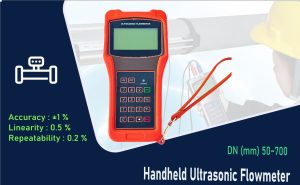Electromagnetic flowmeters¡ªoften referred to as magmeters¡ªare essential tools for accurately measuring flow in water, wastewater, chemical, and industrial applications. Although known for their high reliability and low maintenance, even the best flowmeters can face issues if improperly installed, maintained, or used in harsh environments.
In this comprehensive guide, we¡¯ll walk through the 10 most common faults of electromagnetic flowmeters, explore what causes them, and offer practical solutions and preventive tips. Whether you’re a plant engineer, instrumentation technician, or facility manager, this guide is designed to help you maximize uptime, accuracy, and efficiency.
1.Electromagnetic Flow meter Zero Drift or Instability
What It Is:
The flowmeter doesn¡¯t read zero when the flow is stopped, or the reading fluctuates significantly at low flow rates.
Causes:
Air bubbles in the pipe
Electrode contamination
Poor grounding or shielding
Residual magnetic fields from nearby devices
Fixes:
Install air release valves to eliminate bubbles.
Clean electrodes with appropriate chemical or mechanical methods.
Check and improve grounding practices.
Move electrical noise sources further away or add proper shielding.
Prevention:
Always verify the installation site meets the manufacturer¡¯s recommendations for grounding and pipe orientation.
2. Unstable or Fluctuating Readings
What It Is:
The flowmeter shows unstable or rapidly changing flow values even when flow is steady.
Causes:
Gas in the pipeline
Slurry or mixed-phase flow
Improper electrode contact with fluid
Electrical interference
Fixes:
Degas the pipeline using vents.
Use magmeters designed for multiphase or slurry flows.
Inspect sensor integrity and cable connections.
Prevention:
Use flow conditioning to create laminar flow and maintain consistent fluid properties.
3. Inaccurate Flow Measurement
What It Is:
The readings are consistently higher or lower than expected.
Causes:
Improper sensor calibration
Incorrect pipe diameter input
Electrode fouling or scale
Magnetic coil degradation
Fixes:
Recalibrate the flowmeter as per OEM standards.
Confirm that the entered pipe parameters match actual dimensions.
Clean electrodes.
Replace aging components if needed.
Prevention:
Regularly schedule calibration checks, especially in critical process applications.
4. Output Signal Failure
What It Is:
The analog or digital signal from the meter doesn¡¯t register or stops suddenly.
Causes:
Faulty signal cables
Power supply disruption
Damaged output module
Water ingress into transmitter housing
Fixes:
Inspect and replace damaged cables.
Check and stabilize power supply.
Test signal output board.
Ensure transmitter housing has IP-rated protection and seals are intact.
Prevention:
Use conduit seals and moisture barriers, especially in outdoor or washdown environments.
5. Electromagnetic Flow meter Display Not Working
What It Is:
The LCD/LED display of the flowmeter doesn¡¯t light up or shows garbled information.
Causes:
Internal electronics fault
Power failure
Software glitch
Fixes:
Reboot or reset the unit.
Replace display module.
Verify incoming power levels.
Prevention:
Protect the unit from voltage surges and water ingress.
6. Electrode Coating or Scaling
What It Is:
Deposits on the electrode reduce accuracy or stop measurements altogether.
Causes:
Mineral-rich water
Sticky or viscous fluids
Biogrowth in untreated water
Fixes:
Clean electrodes using manufacturer-approved methods.
Use automatic electrode cleaning systems if available.
Prevention:
Choose electrode materials compatible with your process media (e.g., platinum for aggressive chemicals).
7. Electromagnetic Flow meter Grounding Ring Failure
What It Is:
Improper grounding causes erratic flow readings or sensor errors.
Causes:
Missing or corroded grounding rings
Incorrect installation
Fixes:
Install proper grounding rings if absent.
Replace damaged or oxidized rings.
Prevention:
Always follow grounding best practices, including bonding all metal parts.
8. Empty Pipe Detection Alarm
What It Is:
The flowmeter generates an alarm or error when it detects the pipe is not full.
Causes:
Flowmeter installed in a partially filled pipe
Downstream vacuum pulling fluid away
Incorrect vertical installation
Fixes:
Reposition flowmeter to a full-pipe section.
Install flowmeter on upward vertical pipe runs.
Use flow restrictors if necessary.
Prevention:
Ensure proper orientation and back-pressure design in the pipeline.
9. Reverse Flow or Negative Readings
What It Is:
Flowmeter shows flow in the reverse direction or inconsistent positive/negative readings.
Causes:
Incorrect wiring of flow signal
Reverse installation of sensor
Actual reverse flow conditions
Fixes:
Correct the wiring polarity.
Reinstall flowmeter in the correct direction.
Add check valves or restrict reverse flow.
Prevention:
Clearly mark the flow direction on the pipe and meter during installation.
10. Electromagnetic Flow meter Communication Failure with SCADA/PLC
What It Is:
The magmeter cannot communicate with supervisory systems.
Causes:
Faulty communication cables
Incompatible protocol settings (Modbus, HART, etc.)
Software mismatch or firmware issues
Fixes:
Replace or re-terminate communication lines.
Match protocol settings between the flowmeter and SCADA/PLC.
Update firmware if required.
Prevention:
Always test communications in the field before final commissioning.
Best Practices to Prevent Common Magmeter Failures
To minimize these issues, follow these golden rules of electromagnetic flowmeter maintenance:
Install correctly: Full pipe, straight pipe run, proper grounding
Calibrate regularly: Especially after long downtimes or major maintenance
Clean electrodes: Use non-abrasive tools and chemical cleaners where needed
Protect electronics: Use enclosures and seals to prevent water or dust ingress
Use compatible materials: Electrode, liner, and gasket materials must suit the fluid
Train personnel: Ensure that technicians understand the magmeter¡¯s functionality and maintenance requirements
Conclusion
Electromagnetic flowmeters are highly accurate and reliable instruments when properly maintained and installed. However, like all industrial devices, they are not immune to faults. The key to maintaining accuracy, reducing downtime, and ensuring optimal process control lies in early detection, regular maintenance, and understanding the root causes of common issues.
By learning these 10 common faults of electromagnetic flowmeters, along with their causes and solutions, you are now equipped to improve system performance, reduce repair costs, and extend the life of your instrumentation.
Stay proactive, not reactive¡ªand your flowmeter will thank you.
We are a manufacturer of automatic flow meters with many years of experience in the industry. We have strong independent research and development capabilities and are a leader in the flow meter industry. Our main products include electromagnetic flow meters, vortex flow meters, turbine flow meters, ultrasonic flow meters, Coriolis flow meters, various solenoid valves, level meters, control units and valves, etc. Welcome to purchase –Best Instrument


